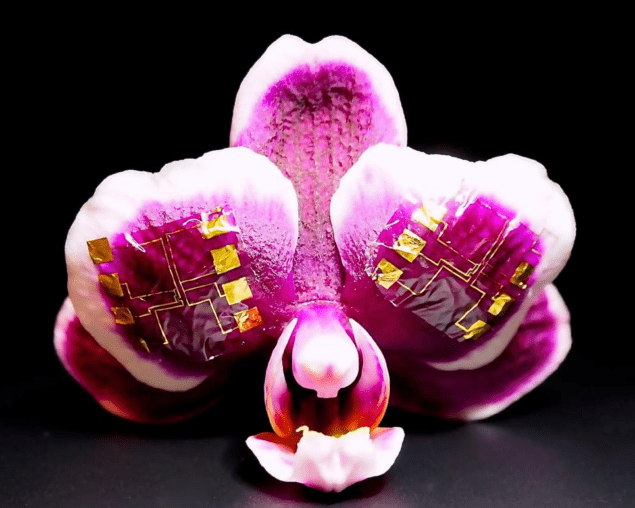
A new ion-driven transistor that can safely interact with human skin has been built and tested by scientists in the US. The team says the device is fast, flexible and capable of the real-time sensing and processing of signals given off by the body. Described as the first biocompatible ion-driven transistor, it could become an important element of integrated bioelectronics systems.
Biocompatible transistors are key components of bioelectronic devices that interact with the body. This growing field of technologies is already recording and processing a range of body signals and delivering electrical and chemical stimulation to the body.
However, with current silicon-based transistors, precautions need to be taken to avoid direct contact between the body and the device. This shielding requirement means that most bioelectronic devices are bulky and rigid, making them uncomfortable for patients. Previous studies have attempted to solve the issue by fabricating flexible, polymer-based transistor devices, but they have generally been far slower and less reliable than their silicon counterparts.
Sugar coated
Now, team of scientists and engineers led by Dion Khodagholy and Jennifer Gelinas at Columbia University have created the “internal-ion-gated organic electrochemical transistor” (IGT), which is a device that uses self-contained, mobile ions to exchange signals with the body. Unlike previous devices, the IGT is fabricated from a flexible polymer containing sugar molecules. Since the molecules attract water, the transistor channel stays hydrated. This is unlike conventional electronics, which must be protected from moisture from the body.
According to the team, the IGT is integrated easily onto the skin, where it can support a host of different interactions between its own ions and those in the body. This can be used to detect and amplify electrochemical signals from the body. The transistors can be gated independently to create scalable logic circuits. In addition, the polymer used in the device shortens the distances over which ions need to travel, making the transistors much faster that previous devices.
The IGT is small enough to fit between the hair follicles on a patient’s head, where the interface is barely perceptible to the patient. The team showed that the device can sense and stimulate real-time brain signals from the surface of the scalp and then carry out complex calculations at fast enough speeds to study the function of the nervous system.
Khodagholy, Gelinas and their colleagues now hope to study how their IGT’s capabilities vary when fabricated using different self-contained ions, and from different polymer materials. Their research could pave the way for implantable, closed-loop bioelectronic devices which can record and manipulate patients’ heart, muscle, and eye movements.
The IGT’s are described in Science Advances.



